Federal stimulus packages explained
The Australian Government has announced two Economic Stimulus packages to the sun of $189 billion.
The package includes both cash and tax incentive measures including;
Real, Cash Money for Small Business Owners
1) 100% Cashback on PAYG Withholding, up to $100,000 in total
Eligible small and medium-sized employers will be provided a 100% tax-free ‘cash back’ of up to $50,000 (and a minimum of $10,000) on your PAYG Withholding on wages between 1 January 2020 and 30 June 2020.
A second tranche of tax-free, cash back payments of up to $50,000 (and a minimum of $10,000) on your PAYG Withholding on wages will also be paid for the period 30 June 2020 – September 2020.
This second payment is calculated as the total cash back credit calculate in the first payment, split evenly over the June-20 to September 20 BAS/IAS lodgement period.
So to summarise – the cash back is now calculated on 100% of PAYGW of your wages, paid in 2 separate calculation periods:
Summary:
Payment 1
100% of PAYGW
Capped at $50,000 for the period, with a minimum of $10,000
Additional Payment (Payment 2)
Calculated the same as Payment 1
Capped at $50,000 for the period, with a minimum of $10,000
To clarify
Payment 1
If you have spent more than $50k in PAYGW for the 6 month period between 1 January and 30 June 2020, you will receive $50,000 in cash from the Government for this period.
If you have spent $30k in PAYGW for the same period, you will get $30,000
Additional Payment 2
The same total benefit per Payment 1 is paid equally over your BAS/IAS lodgement period between 30 June 2020 and 30 September 2020
A couple of points on this:
If you take your ‘salary’ as a dividend or directors drawing and want to maximise your ‘cash back’, you could explore changing the treatment of your remuneration from drawings to salary…
If you have an existing debt with the ATO, this benefit will offset your existing liability.
This credit will automatically be processed upon lodgement for your BAS and IAS. Your accountant and/or bookkeeper will process it for you.
? Use this worksheet to calculate your incentive (‘make a copy’ that you can edit)
? Watch this video for a tutorial on how to use the calculator
This can be overwhelming. We can help.
APPRENTICE WAGES
2) 50% subsidy on apprentice wages, up to $21,000
Eligible employers can apply for a wage subsidy of 50% of apprentice or trainee wages for up to 9 months from 1 January 2020 to 30 September 2020 (up to a maximum of $21,000 per eligible apprentice or trainee).
If a small business is not able to retain an apprentice, the subsidy will be available to a new employer that employs that apprentice.
TAX INCENTIVES FOR SMALL BUSINESS OWNERS
The immediate tax deduction threshold has been increased from $30,000 to $150,000 for assets purchased between 12 March 2020 and 30 June 2020
Assets over $150,000 will attract an additional 50 percent depreciation rate of the asset cost in the year of purchase for assets purchased between 12 March 2020 and 30 June 2021
A couple of other points on this:
It’s important to note that these are tax incentives, not cash back incentives. In other words, you need to spend the money, and pay income tax in order to get the tax benefit.
The tax benefits will be applicable for your FY20 and FY21 tax returns, which means you won’t see any benefit until you’ve lodged your 2020 and 2021 returns.
? How to apply?
This credit will be processed by your tax accountant upon preparation and lodgement for your 2020 and 2021 income tax returns.
TAX PAYMENT DEFERRALS
The ATO is providing SMEs payment deferral concessions for businesses directly impacted by COVD-19.
Concessions are outlined as follows;
Deferring by up to 4 months the payment date of amounts due through the business activity statement (including PAYG instalments), income tax assessments, fringe benefits tax assessments and excise.
Allow businesses on a quarterly reporting cycle to opt into monthly GST reporting in order to get faster access to GST refunds they may be entitled to.
Allowing businesses to vary Pay As You Go (PAYG) instalment amounts to zero for the March 2020 quarter. Businesses that vary their PAYG instalment to zero can also claim a refund for any instalments made for the September 2019 and December 2019 quarters.
Remitting any interest and penalties, incurred on or after 23 January 2020, that have been applied to tax liabilities.
Working with affected businesses to help them pay their existing and ongoing tax liabilities by allowing them to enter into low interest payment plans.
A couple of very important things to note:
- YOU WILL STILL NEED TO PAY SUPERANNUATION
- THESE RELIEF PROVISIONS ARE NOT AUTOMATICALLY APPLIED
- YOU OR YOUR ACCOUNTANT MUST CONTACT THE ATO TO MAKE ANY OF THE ABOVE REQUESTS FOR ASSISTANCE
Businesses can call the ATO’s Emergency Support Infoline on 1800 806 218 to discuss relief options based on their needs and circumstances.
GOVERNMENT UNDERWRITTEN CASHFLOW LOANS FOR SME’s
The Government will provide a guarantee of 50% of new loans written by banks and SME lenders to support new short-term unsecured loans to SMEs.
Important clarification – this does not mean the Federal Government is issuing loans directly.
It means that the Government is providing a guarantee to banks and SME lenders to reduce their risk to provide unsecured loans to SMEs that need the cash for working capital.
So what does this mean for you?
Expect a new type of loan product issued by the banks and lenders, tailored for SMEs that have been directly disrupted by COVID-19
? How to apply?
Contact your bank/lending institution about this package.
If you need a debt assessment or are seeking finance, contact us and meet with our joint venture partner Mike Doyle, Vertex Finance.
Refer to the ‘Coronavirus SME Guarantee Scheme’ and ask what new loan products are available to assist.





